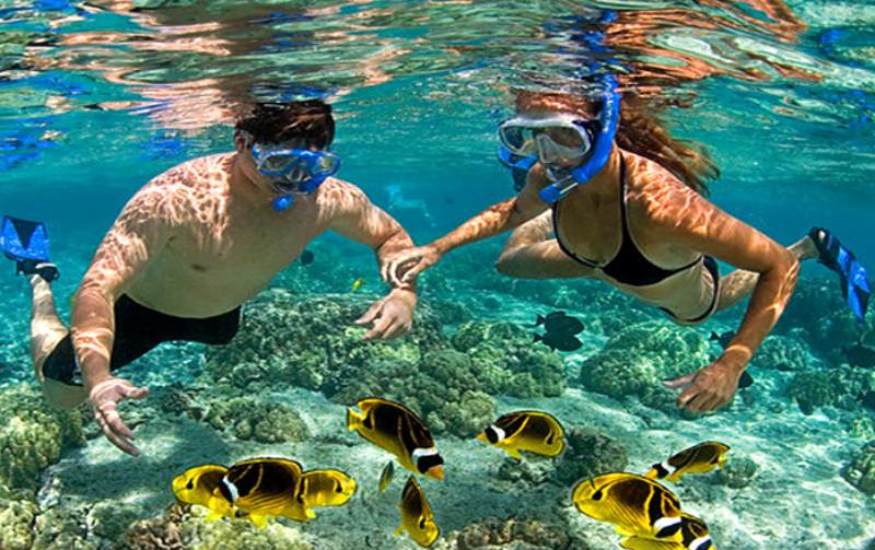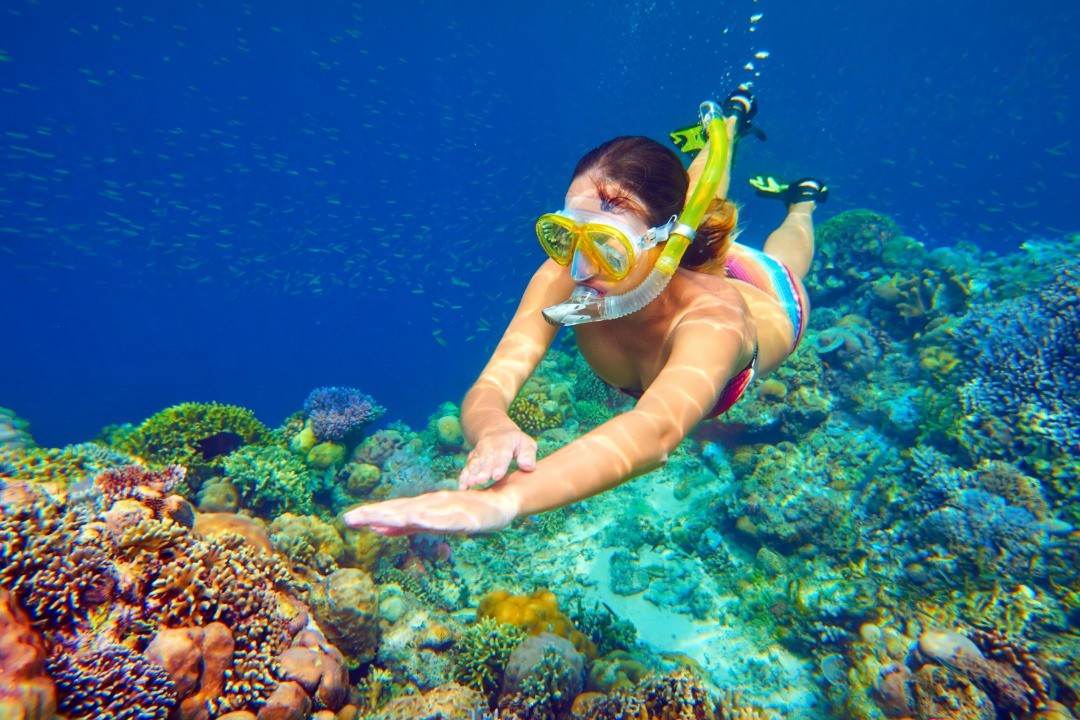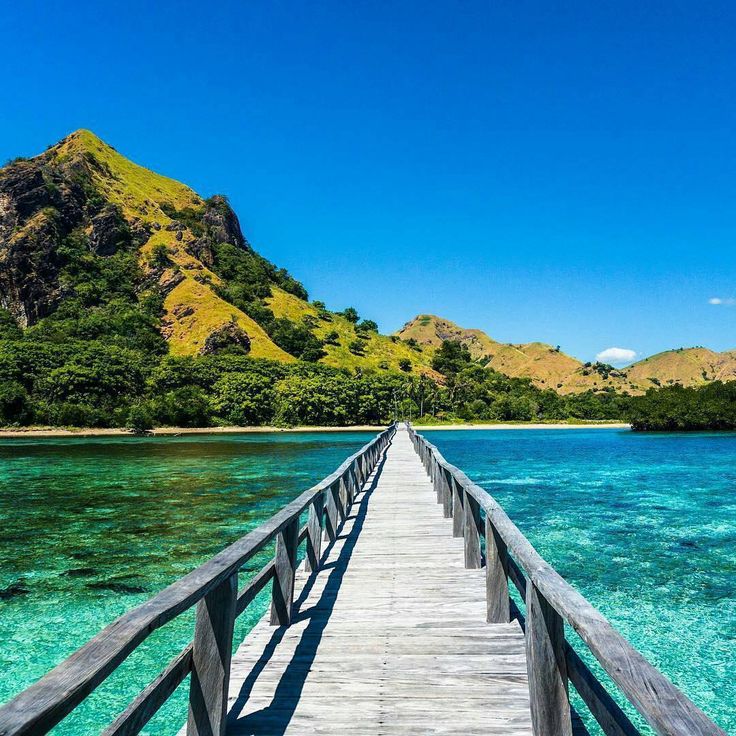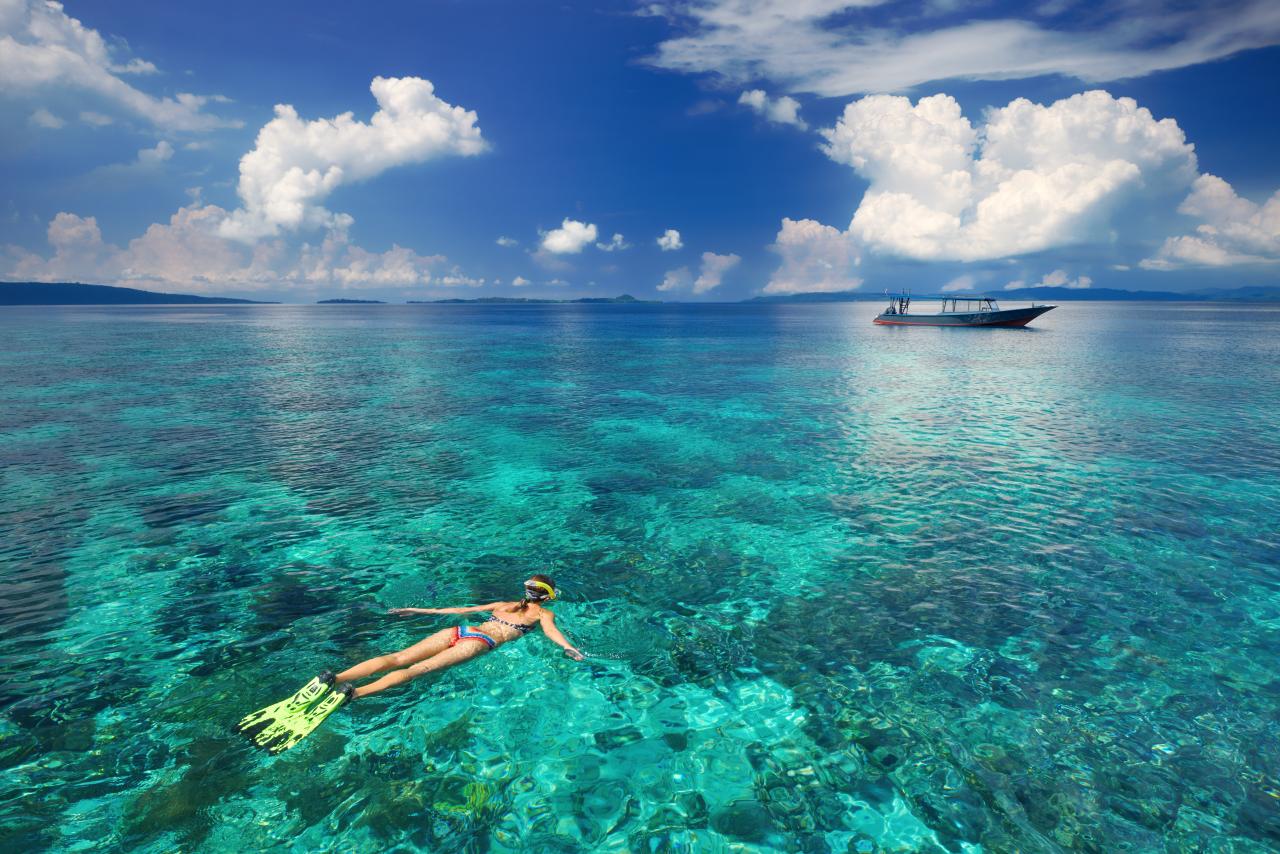Discovering remote Indonesian islands with pristine beaches and snorkeling is a dream for many adventurers. Imagine turquoise waters teeming with vibrant coral reefs and exotic marine life, all framed by stretches of powdery white sand. This isn’t just a vacation; it’s an immersion into a world of untouched beauty, a journey to discover hidden paradises where the only sounds are the gentle lapping of waves and the rustling of palm trees.
Prepare to be captivated by the allure of these unspoiled Indonesian gems, where snorkeling reveals underwater wonders and the beaches offer pure relaxation.
From secluded coves to expansive shores, these islands offer diverse experiences. Imagine yourself exploring the unique cultures of the local communities, savoring authentic Indonesian cuisine, and creating memories that will last a lifetime. This isn’t just a trip; it’s an escape, a chance to reconnect with nature and discover the true meaning of paradise.
Unveiling Indonesia’s Hidden Gems

Imagine yourself stepping onto a beach so pristine, the sand whispers secrets only the ocean understands. Picture yourself snorkeling in waters teeming with vibrant coral and kaleidoscopic fish, a world untouched by the relentless tide of mass tourism. This is the reality waiting to be discovered in Indonesia’s remote islands, a hidden archipelago of breathtaking beauty and unparalleled adventure.
These aren’t the Bali’s or Lombok’s you’ve seen in countless travel brochures; these are the islands whispered about in hushed tones by seasoned explorers, the places where nature reigns supreme.The allure of these undiscovered Indonesian islands lies in their untouched beauty. Pristine beaches stretch for miles, their white sands warmed by the tropical sun, fringed by turquoise waters so clear you can see the ocean floor.
The snorkeling opportunities are equally exceptional. These reefs, often shielded from the pressures of human activity, boast an incredible biodiversity. Schools of brightly colored fish dart amongst vibrant coral formations, creating a mesmerizing underwater spectacle that leaves even the most seasoned snorkeler breathless. The sheer diversity of marine life, ranging from tiny, delicate seahorses to majestic sea turtles, is a testament to the health and vitality of these ecosystems.
The Unique Biodiversity of Remote Indonesian Reefs
The coral reefs surrounding these remote islands are havens of biodiversity. Unlike many reefs worldwide that are suffering from bleaching and degradation, these often enjoy a relative lack of human impact, allowing them to thrive. This translates to a higher density of coral species, a greater variety of fish, and a richer ecosystem overall. One could encounter a dazzling array of fish species, including angelfish with their iridescent scales, clownfish nestled amongst anemones, and parrotfish with their beak-like mouths grazing on coral.
The reefs are not just visually stunning; they are also critical for maintaining the health of the surrounding ocean and supporting local fishing communities. These vibrant ecosystems are a vital part of Indonesia’s natural heritage and a reminder of the importance of conservation.
Exploring the Untouched Beaches of Remote Indonesia
The beaches themselves are as diverse as the marine life they border. Some are stretches of powdery white sand, perfect for sunbathing and relaxing. Others are framed by dramatic cliffs and lush vegetation, offering a more rugged and adventurous landscape. The feeling of seclusion is palpable; the only sounds are the gentle lapping of waves and the calls of exotic birds.
Many of these beaches remain virtually untouched, offering a true escape from the hustle and bustle of modern life. The tranquility and natural beauty create an unparalleled sense of peace and rejuvenation. Imagine sinking your toes into warm, pristine sand, feeling the sun on your skin, and breathing in the fresh, salty air – a perfect picture of paradise.
Island Selection & Accessibility

Discovering Indonesia’s hidden island gems requires more than just a thirst for adventure; it demands careful planning to reach these secluded paradises. Accessibility varies greatly depending on the island’s remoteness and infrastructure. While some boast regular flights and ferry services, others require a more intrepid approach, rewarding the traveler with a truly unique experience.Reaching these pristine shores often involves a combination of air and sea travel, sometimes with a dash of local ingenuity thrown in.
This section details the journey to five lesser-known islands, highlighting the different routes and travel times involved.
Lesser-Known Indonesian Islands: Accessibility and Travel Time
Choosing the right island depends heavily on your travel style and comfort level. Below is a table outlining five islands offering exceptional beaches and snorkeling opportunities, along with their respective accessibility details.
| Island Name | Location | Accessibility | Notable Features |
|---|---|---|---|
| Pulau Weh | Off the coast of Sumatra | Flights to Banda Aceh (airport code: BTJ), followed by a ferry to Pulau Weh. | Stunning coral reefs, excellent diving and snorkeling, Mount Seulawah Agam volcano. |
| Raja Ampat | West Papua | Flights to Sorong (airport code: SOQ), followed by a speedboat to the islands. Liveaboard options are also popular. | World-renowned diving and snorkeling, incredibly diverse marine life, secluded beaches. |
| Nusa Penida | Bali | Fast boats from Sanur or Nusa Lembongan. | Dramatic cliffs, Kelingking Beach (T-Rex cliff), crystal-clear waters, excellent snorkeling spots. |
| Derawan Islands | East Kalimantan | Flights to Berau (airport code: BEJ), followed by a boat transfer to the islands. | Stunning marine biodiversity, turtle rehabilitation centers, calm waters perfect for snorkeling. |
| Wakatobi | Southeast Sulawesi | Flights to Bau-Bau (airport code: BAA) or Kendari (airport code: KDI), followed by a boat transfer to the islands. | Exceptional diving and snorkeling, known for its vibrant coral reefs, diverse fish species. |
Reaching these islands often involves a multi-stage journey. For instance, accessing Raja Ampat necessitates a flight to Sorong, a relatively large city in West Papua, followed by a boat ride to the specific island within the Raja Ampat archipelago. This can add significant travel time, sometimes extending the journey to a full day or more. Conversely, Nusa Penida, being closer to Bali, offers quicker access via fast boats from Sanur, making it a more convenient option for shorter trips.
The travel time to each island should be carefully considered when planning your itinerary, factoring in potential delays and connecting flights or ferries.
Snorkeling Experiences
Prepare to be amazed by the underwater realms of Indonesia’s remote islands. These pristine waters teem with life, offering unparalleled snorkeling opportunities for adventurers of all levels. The vibrant coral reefs and diverse marine species create an unforgettable experience, a kaleidoscope of color and movement just beneath the surface.The biodiversity of Indonesia’s waters is truly staggering. From tiny, iridescent reef fish darting between coral branches to majestic sea turtles gracefully gliding through the currents, the underwater world is a spectacle of nature’s artistry.
Larger creatures, such as reef sharks (generally harmless to snorkelers), and playful dolphins are also occasionally sighted, adding to the thrill of the exploration. Healthy coral reefs provide crucial habitat for this incredible array of marine life, supporting a complex and delicate ecosystem.
Coral Reef Ecosystem Visualization
Imagine a vibrant underwater landscape. A tapestry of coral in shades of pink, orange, yellow, and purple forms the base. Schools of neon-blue and yellow fish weave through the coral branches, their movements creating shimmering patterns in the water. A large, green sea turtle grazes peacefully on seagrass nearby, its shell adorned with encrusting organisms. Smaller fish, like angelfish with their striking colours and intricate patterns, dart between crevices in the coral, while a moray eel peeks out from its hiding place.
Further out, a lone, graceful seahorse clings to a gorgonian fan, its camouflage almost perfect. The entire scene pulsates with life, a testament to the health and beauty of the reef.
Raja Ampat Snorkeling
Raja Ampat, located in West Papua, is renowned for its exceptional marine biodiversity. This archipelago boasts over 1,500 species of fish and 600 types of coral, making it a diver and snorkeler’s paradise. The best time to visit is during the dry season (October to April), when the waters are calm and visibility is excellent. Snorkelers can expect to encounter an incredible array of reef fish, including brightly colored angelfish, butterflyfish, and parrotfish.
Larger marine life, such as sharks and rays, are also frequently sighted.
Wakatobi National Park Snorkeling
Wakatobi National Park, situated in Southeast Sulawesi, is another jewel in Indonesia’s crown. This park is known for its pristine coral reefs and abundant marine life. The waters are generally calm, making it ideal for snorkeling. The best time to visit is during the dry season (April to October). Highlights include encounters with diverse reef fish, sea turtles, and occasionally, even whale sharks (though sightings are not guaranteed).
The park’s diverse habitats, from shallow reefs to deeper drop-offs, offer varied snorkeling experiences.
Discovering Indonesia’s hidden gems, with their pristine beaches perfect for snorkeling, is an unforgettable experience. But the thought of venturing solo to these remote islands might seem daunting; check out this guide on how to overcome the fear of traveling alone and embrace solo adventures to boost your confidence. Once you conquer that fear, the turquoise waters and untouched sands of these Indonesian paradises await!
Derawan Islands Snorkeling
The Derawan Islands, located off the coast of East Kalimantan, offer a more relaxed snorkeling experience. Known for its calm waters and beautiful beaches, this archipelago is perfect for families and less experienced snorkelers. The best time to visit is during the dry season (May to October). Snorkelers can expect to see a wide variety of colorful reef fish, sea turtles, and occasionally, dugongs (sea cows).
The shallow reefs are easily accessible, making it a great spot for beginners.
Beach Paradise

Indonesian islands boast a breathtaking array of beaches, each offering a unique and unforgettable experience. From the powdery sands to the vibrant marine life just offshore, these coastal havens are a key part of the Indonesian archipelago’s allure. This section delves into the distinct characteristics of five idyllic islands, comparing their beaches and highlighting the diverse activities available.
The following comparison showcases the unique beauty of five Indonesian islands, highlighting the diverse characteristics of their beaches. Each offers a different experience, catering to various preferences.
Beach Characteristics Comparison
Let’s explore the distinctive features of the beaches across these five islands, considering sand color, wave type, and surrounding vegetation.
- Island A: Features white sand beaches with gentle, rolling waves. Lush tropical vegetation, including coconut palms and casuarinas, lines the shore, creating a tranquil and shaded environment.
- Island B: Known for its dark volcanic sand beaches, offering a dramatic contrast to the turquoise waters. Waves tend to be more powerful here, making it ideal for experienced surfers. Sparse vegetation allows for expansive views of the ocean.
- Island C: Boasts a mix of white and pink sand beaches, a result of crushed coral mixed with the white sand. The waves are generally calm, perfect for swimming and snorkeling. The beach is fringed with low-lying shrubs and occasional sea grapes.
- Island D: Characterized by its fine, golden sand beaches. The waves are typically moderate, suitable for a range of water activities. The shoreline is dotted with swaying palm trees and lush greenery, creating a classic tropical beach scene.
- Island E: Displays pristine white sand beaches with crystal-clear, shallow waters. The waves are exceptionally calm, making it ideal for families with young children. The beach is relatively sheltered, with a backdrop of low-lying hills covered in dense vegetation.
Beach Ambiance and Atmosphere
The atmosphere of each beach contributes significantly to the overall island experience. From secluded retreats to lively family-friendly destinations, each island caters to a different kind of traveler.
- Island A: Offers a tranquil and secluded atmosphere, perfect for relaxation and escaping the crowds.
- Island B: Possesses a more adventurous and energetic vibe, attracting surfers and those seeking a thrilling experience.
- Island C: Provides a relaxed and family-friendly environment, ideal for swimming, snorkeling, and building sandcastles.
- Island D: Combines elements of both relaxation and activity, offering a balanced atmosphere suitable for a variety of travelers.
- Island E: Maintains a peaceful and intimate atmosphere, perfect for couples and those seeking a romantic getaway.
Popular Beach Activities
Beyond simply enjoying the scenic beauty, these islands offer a range of engaging beach activities. The calm waters and pristine sands provide ample opportunities for recreation and relaxation.
- Sunbathing: The soft sands and abundant sunshine make these beaches perfect for sunbathing. Visitors can relax, soak up the vitamin D, and enjoy the idyllic surroundings. Remember to use sunscreen and stay hydrated.
- Swimming: Many of these islands boast calm, clear waters ideal for swimming. The gentle waves and shallow areas make it safe and enjoyable for people of all ages and swimming abilities. Always be mindful of any local warnings or advisories.
- Beach Volleyball: The wide, sandy beaches provide ample space for a friendly game of beach volleyball. Many resorts even offer organized games and tournaments, adding a social and active dimension to the beach experience. Remember to bring a ball or rent one from a local vendor.
Local Culture and Experiences: Discovering Remote Indonesian Islands With Pristine Beaches And Snorkeling

Beyond the breathtaking beaches and vibrant coral reefs, Indonesia’s remote islands offer a captivating glimpse into a rich tapestry of local cultures and traditions. These islands, often untouched by mass tourism, preserve unique ways of life, offering travelers an authentic and immersive experience far removed from the typical tourist trail. Engaging with the local communities provides a deeper understanding of Indonesian heritage and fosters meaningful connections.Exploring the local cultures allows you to witness traditions passed down through generations, often deeply intertwined with the islands’ natural environment.
The warmth and hospitality of the islanders are legendary, and interacting with them adds an unforgettable dimension to your Indonesian adventure.
Discovering remote Indonesian islands offers unparalleled beauty; think pristine beaches perfect for snorkeling and hidden coves begging to be explored. But your Indonesian adventure shouldn’t stop at the sand! Dive deeper into the rich tapestry of Indonesian culture by checking out unique cultural experiences beyond Bali for adventurous travelers , then return to those breathtaking beaches and turquoise waters for the ultimate island escape.
It’s the perfect blend of relaxation and cultural immersion.
Traditional Dances and Performances, Discovering remote Indonesian islands with pristine beaches and snorkeling
Many remote Indonesian islands boast unique traditional dances, each telling a story through intricate movements and vibrant costumes. These performances often celebrate harvests, historical events, or spiritual beliefs. For instance, the Kecak dance of Bali, though not strictly from a remote island, provides a powerful example of a traditional performance that showcases storytelling through movement and chanting. Imagine witnessing a similar performance on a secluded island, under the stars, with the rhythmic sounds echoing across the tranquil waters.
The experience is profoundly moving and offers a deep connection to the island’s spirit.
Local Markets and Artisanal Crafts
A visit to a local market is an essential part of any cultural immersion. These bustling hubs are overflowing with fresh produce, exotic spices, and handcrafted goods. You’ll find vibrant textiles woven with traditional patterns, intricate wood carvings, and beautiful jewelry crafted from local materials. Interacting with the vendors, bargaining respectfully, and learning about the origins of the goods adds a layer of authenticity to your souvenir shopping.
The aroma of spices, the chatter of the locals, and the colorful displays create a sensory feast, showcasing the vibrant economic life of the island community.
Culinary Delights and Unique Island Flavors
Indonesian cuisine is renowned for its diversity, and the remote islands offer unique culinary experiences. Each island boasts its own specialities, often using locally sourced ingredients. Imagine savoring freshly caught seafood grilled over an open fire, accompanied by fragrant rice and spicy sambals. Participating in a cooking class can provide an intimate understanding of local culinary traditions and allow you to recreate these delicious dishes at home.
The flavors are as diverse and vibrant as the islands themselves, offering a taste of the local way of life.
An Encounter with the Island Community
During a recent trip to a small island off the coast of Raja Ampat, I had the opportunity to assist a local fisherman mending his nets. While my skills were limited, the shared experience transcended language barriers. We communicated through smiles, gestures, and shared sips of sweet coconut water. He showed me the intricate knotting techniques, and I offered to help in any way I could.
The simplicity of the moment, the shared effort, and the genuine connection we forged was a highlight of my journey. It underscored the warmth and welcoming nature of the Indonesian people, proving that true connection often transcends the need for fluent communication.
Planning Your Trip
Embarking on an adventure to Indonesia’s remote islands requires careful planning to ensure a smooth and unforgettable experience. This section Artikels essential practical considerations, from packing essentials to budgeting for your trip, helping you navigate the logistics and maximize your enjoyment of these hidden paradises. Remember, flexibility is key when venturing off the beaten path!
Essential Packing Checklist
Packing for a trip to remote Indonesian islands necessitates a blend of practicality and preparedness. Consider the tropical climate, potential for outdoor activities, and limited access to amenities when assembling your luggage. Over-packing is easily avoided with careful consideration of your itinerary and planned activities.
- Lightweight, quick-drying clothing: Pack breathable fabrics like linen and cotton for the humid climate. Avoid heavy materials that will retain moisture.
- Swimsuit(s): Essential for enjoying the pristine beaches and snorkeling opportunities.
- Reef-safe sunscreen: Protect your skin and the delicate coral reefs with a high SPF, reef-friendly sunscreen.
- Snorkeling gear: While some accommodations may offer rentals, bringing your own mask, snorkel, and fins ensures a comfortable fit and hygiene.
- Water shoes or sandals: Protect your feet from sharp rocks and hot sand.
- Insect repellent: Mosquitoes and other insects can be prevalent, especially in more forested areas.
- Hat and sunglasses: Essential for sun protection.
- Rain gear: Tropical downpours can be sudden and intense; a lightweight rain jacket or poncho is advisable.
- First-aid kit: Pack essential medications, bandages, antiseptic wipes, and any personal medications you require.
- Copies of important documents: Keep copies of your passport, visa (if required), travel insurance, and flight/ferry tickets in a separate location from the originals.
- Reusable water bottle: Staying hydrated is crucial in the tropical climate; refill it regularly to minimize plastic waste.
- Small backpack: Useful for day trips and carrying essentials like water, sunscreen, and a towel.
- Camera: Capture the stunning scenery and unforgettable moments.
- Power bank: Keep your electronic devices charged, especially if you’ll be away from power sources for extended periods.
- Indonesian Rupiah: While credit cards are accepted in some areas, having local currency on hand is always recommended, especially in more remote locations.
Sample Seven-Day Itinerary
This itinerary provides a framework; adjust it based on your interests and preferred pace. Travel times between islands can vary significantly depending on the mode of transportation (speedboat vs. ferry). Pre-booking ferries is highly recommended, especially during peak season.
- Day 1: Arrival in Bali (Denpasar), transfer to Nusa Lembongan. Settle into your accommodation and enjoy a sunset stroll along the beach.
- Day 2: Nusa Lembongan: Snorkeling at Manta Point and exploring Dream Beach. Enjoy a traditional Indonesian dinner.
- Day 3: Nusa Lembongan: Rent a scooter to explore the island, visit Devil’s Tear, and relax on Mushroom Bay beach.
- Day 4: Ferry to Nusa Ceningan: Explore the Blue Lagoon, swing over the cliff, and enjoy the laid-back atmosphere.
- Day 5: Ferry to a more remote island (e.g., Moyo Island or Wakatobi): This will depend on your chosen destination and travel time. Settle in and enjoy the pristine beaches.
- Day 6: Explore your chosen remote island: Snorkeling, swimming, hiking, and exploring local villages. Enjoy a seafood dinner.
- Day 7: Departure from your remote island, transfer back to Bali for your flight home.
Budgeting for Your Trip
Budgeting for a trip to Indonesia’s remote islands depends heavily on your travel style and chosen destinations. Accommodation ranges from budget-friendly guesthouses to luxurious resorts. Food costs can be kept relatively low by eating at local warungs (small restaurants), but expect higher prices in tourist areas. Activities such as boat trips and snorkeling tours will add to your overall expenses.
Example Budget (per person, for 7 days, excluding flights):
Budget-conscious traveler: IDR 7,000,000 – IDR 10,000,000 (approximately USD 460 – USD 660)
Mid-range traveler: IDR 15,000,000 – IDR 25,000,000 (approximately USD 1000 – USD 1660)
Luxury traveler: IDR 30,000,000+ (approximately USD 2000+)
Note: These are estimates and can vary depending on the season, your choices of accommodation and activities, and your spending habits.
Responsible Tourism
Indonesia’s remote islands, with their pristine beaches and vibrant coral reefs, are incredibly vulnerable to the impacts of tourism. While tourism can bring economic benefits to local communities, it’s crucial to ensure this development is sustainable and doesn’t compromise the very beauty that attracts visitors. Uncontrolled tourism can lead to environmental degradation, cultural erosion, and ultimately, the destruction of the paradise we’re all striving to protect.
Responsible tourism is not just a trend; it’s a necessity for the long-term survival of these idyllic locations.The impact of tourism on these fragile ecosystems is multifaceted. Increased visitor numbers can lead to pollution from waste, damage to coral reefs from careless snorkeling or diving practices, and habitat destruction from poorly planned infrastructure. Over-reliance on tourism can also displace traditional livelihoods and erode local cultures.
The influx of tourists can strain resources like fresh water and energy, potentially leading to shortages for local communities. Therefore, minimizing negative effects requires a collaborative effort from tourists, local governments, and tourism operators.
Minimizing Negative Environmental Impacts
Protecting the environment is paramount. The beauty of these islands relies on the health of their ecosystems. This requires careful management of waste, both solid and liquid. Proper waste disposal systems are needed, along with educational campaigns encouraging tourists to leave no trace. Sustainable infrastructure development is also key, prioritizing minimal environmental impact and utilizing eco-friendly building materials.
Furthermore, strict regulations and enforcement are necessary to prevent damage to coral reefs and other sensitive marine habitats. For example, limiting the number of visitors to sensitive areas, establishing designated snorkeling and diving zones, and promoting responsible boating practices can significantly reduce environmental damage. Imagine the difference between a beach littered with plastic and one that remains pristine – the latter is the goal of responsible tourism.
Respecting Local Cultures and Communities
Tourism should benefit local communities, not exploit them. This means ensuring fair wages and working conditions for those employed in the tourism sector. Supporting locally owned businesses and participating in culturally sensitive activities helps to empower communities and preserve their traditions. Respecting local customs and traditions, learning a few basic Indonesian phrases, and dressing modestly are simple yet significant gestures of respect.
Consider the impact of a tourist disrespecting a sacred site versus one who actively seeks to understand and appreciate the local culture – the difference is profound. Engaging with local guides and artisans provides authentic experiences while directly supporting the community.
Individual Traveler Actions for Responsible Tourism
Travelers play a vital role in promoting responsible tourism. Choosing eco-friendly accommodations, minimizing your carbon footprint by using public transportation or walking whenever possible, and supporting businesses committed to sustainability are essential steps. Respecting wildlife and avoiding interactions that could harm them is crucial. This includes not feeding animals, maintaining a safe distance from marine life, and refraining from purchasing souvenirs made from endangered species.
Before your trip, research the local customs and traditions and plan your activities accordingly. Finally, leave the islands cleaner than you found them—pack out everything you pack in. This commitment ensures that future generations can also enjoy the beauty of Indonesia’s hidden gems.